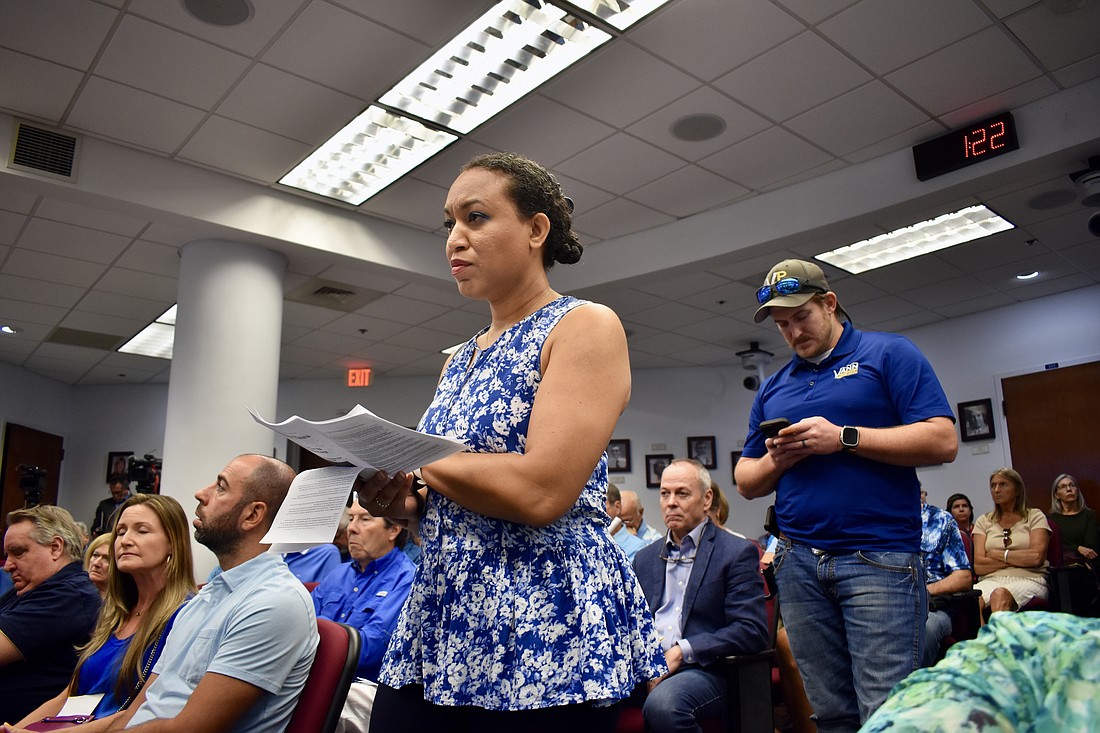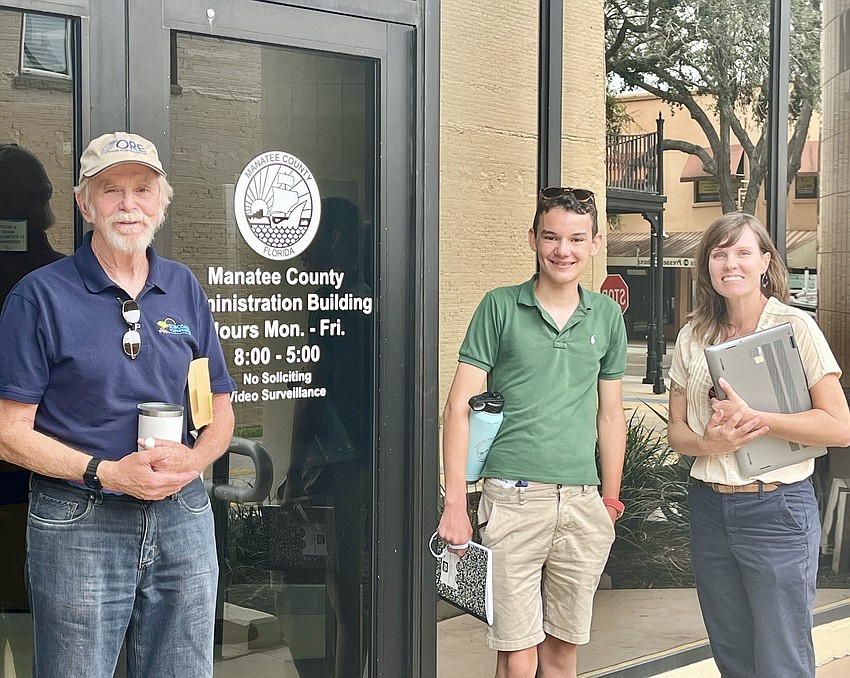- July 11, 2025
-
-
Loading

Loading

On Oct. 5, Manatee County commissioners will make their final decision on whether to remove language in the Comprehensive Plan that provides additional protections for wetlands.
If removed, wetland regulation in Manatee County will default to state standards, which are less protective than current regulations laid out in the Comprehensive Plan. The buffers between wetlands and construction would be reduced from 50 feet to 15 feet.
The Planning Commission voted 4-2 Aug. 10 to recommend to Manatee County Commissioners not to transmit the matter to the state legislature. On Aug. 17, the Board of County Commissioners passed the measure 6-1 with Commissioner George Kruse dissenting.
Both meetings caused residents to descend on the administration building to oppose the move. They packed the chambers and overflowed into a viewing area on the fifth floor. Most stated a reiteration of the same basic stance: Don’t remove the language.
Two main figures mostly represented the opposing sides during the commission meeting. County-hired consultant Daniel DeLisi and Abbey Tyrna, the executive director of Suncoast Waterkeeper.
Suncoast Waterkeeper is a watchdog organization with a mission to protect waterways within the suncoast. Tyrna holds a master’s degree in wetland science and management from Louisiana State University.
DeLisi is a certified land use planner with experience in zoning, land development regulations and water and environmental policies.
Here are their sides of three major questions asked by both commissioners and the public:
DeLisi said he hadn’t seen any documentation to indicate a 25-foot buffer is better than a 50-foot buffer and added that more is not “blanketly” better. He believes restoration projects can do more to improve water quality than wider buffers.
In a written response following the meeting, Tyrna cited seven different sources that say bigger buffers are better. She added the studies also say having a greater than 50-foot buffer around sensitive lands is a necessary minimum to protect ecosystem function and quality.

“When a scientist calculates the condition of a wetland, the score is directly related to the buffer width,” Tyrna wrote. “Larger buffers provide high scores, which are evidenced by the higher wetland function and condition.”
DeLisi recommended adding water quality measures to improve the stormwater system within the land development code versus keeping the additional language in the Comprehensive Plan. DeLisi said the right stormwater system can improve the current water quality.
“If your goal is to improve water quality, (buffers) are probably not your most effective means of providing the water quality benefits,” DeLisi told commissioners. “There are other means within your water quality system that are better at filtering the nutrients than an upland buffer to a wetland of an additional 5 feet or 25 feet.”
Tyrna agreed that there are more effective ways to ensure water quality but added they’re not required by state law. She singled out surface waters, such as streams, because the state doesn’t require setbacks or buffers around them.
“Therefore, all the chemicals, pesticides and fertilizers applied to the yard, and pet waste deposited, will be directly connected to our drinking water through these unprotected stream reaches,” Tyrna wrote. “With a large, greater than 50-foot buffer, these streams are protected from a person’s lawn care and landscape practices. Without a buffer, these streams become super highways for contaminants, and those contaminants will be delivered right into our drinking water reservoir, compliments of the county commission.”
DeLisi answered, “No.” While he has seen studies that refer to nutrients and runoff as a “seed source” for prolonging red tide, he referred back to stormwater systems as a better solution to lessening the nutrients in the water that exacerbate algae blooms.
“Stormwater systems are designed to provide nutrient removal before anything even goes back to the wetland or wetland buffer,” he said. “I don’t know where you’d get increased nutrients to get exacerbated levels of red tide.”
Tyrna said that even with the most sophisticated stormwater system, stormwater is still responsible for 60% of the nutrient pollution to downstream water.
“This same nutrient load has been found, as Mr. DeLisi noted, to increase the frequency and intensity of red tide,” she said. “(Stormwater systems) are not enough. That is why you need to keep your buffer zone requirements and your wetland protections. So that you can, if developed properly, intercept the 60% of the pollution we know is not being captured by stormwater management systems.”